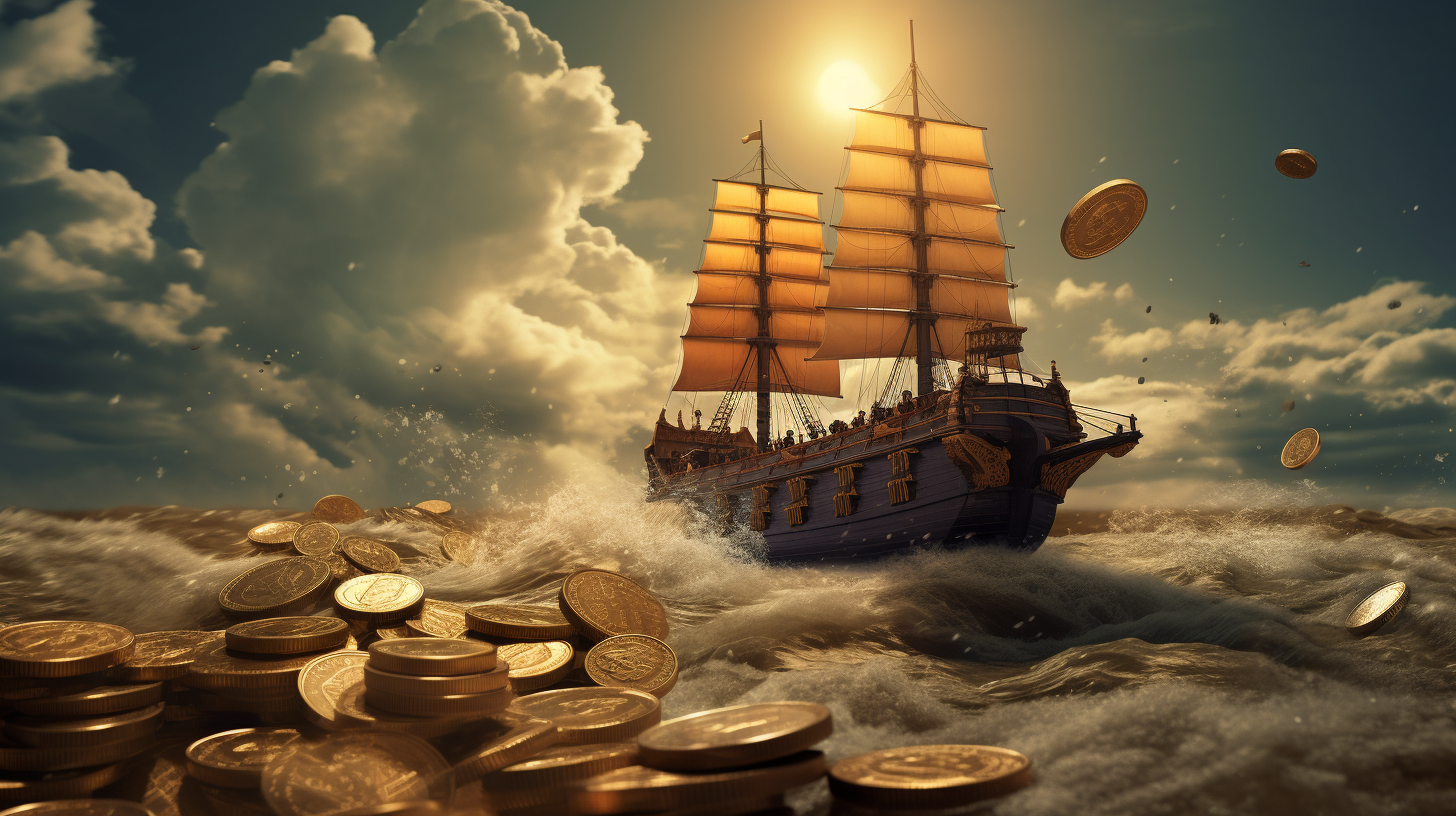Riding the Crypto Wave in Maritime Economics
The boundless blue oceans have been a conduit for trade and cultural exchange since ancient times. And in today’s digital era, cryptocurrencies are the new sails propelling the age-old industry of international shipping into uncharted waters. Gone are the days when transactions and trade agreements were confined to paper trails and slow bank transfers. Cryptocurrency has unleashed a tsunami of change, creating both thrilling opportunities and formidable challenges for the shipping industry.
Imagine a complex network of cargo ships, bustling ports, and streamlined operations, where every transaction from fuel purchase to crew wages is paid in Bitcoin, Ethereum, or other digital currencies. We’re not just speculating – this is the dawn of a new era, where the phrase ‘time is money’ rings truer than ever.
A New Currency for the Ancient Trade Routes
‘With great power comes great responsibility.’ This axiom resonates deeply with the adoption of cryptocurrency in international shipping. The decentralization of the monetary system has handed power back to the shipping companies and their clients but requires a vigilant approach to cybersecurity and market volatility.
The benefits of incorporating digital currency in shipping are manifold. Transactions are immediate and borderless, eliminating the need for currency exchange and associated fees. Smart contracts ensure automated, trustless agreements which increase efficiency and reduce the potential for disputes. But it is not all smooth sailing; the waters of cryptocurrency are choppy with price fluctuations and the threat of piracy being redefined in the digital age.
Charting a Course Through Unstable Waters
One cannot ignore the tempest of market volatility when discussing cryptocurrency’s role in international trade. Shipping magnates must navigate these tumultuous seas with expertise, often turning to specialized fiscal forecasters who can read the patterns in market trends much like ancient mariners read the stars.
The use of stablecoins, pegged to fiat or other assets, has emerged as a beacon of stability in these fluctuating markets. Additionally, hedging strategies are in place to safeguard assets against the capricious winds of crypto markets. This is not merely about staying afloat; it’s about harnessing the storm for a competitive edge.
A New Breed of Pirates
The term ‘pirate’ conjures images of swashbuckling villains, but in the crypto realm, digital piracy is an invisible and insidious threat. Cybersecurity is paramount as cyber pirates relentlessly seek to exploit vulnerabilities within blockchain networks and ship’s onboard systems. However, the immutable nature of blockchain provides a robust defense, and the industry is employing cutting-edge security measures to shield their treasuries.
Building a Fleet for the Future
Technological advancements in cryptocurrency are leading the way to a future where ships are not only financially autonomous but also operated by AI. The integration of AI with blockchain technology is paving the way for self-executing ships that can make autonomous port calls, negotiate shipping contracts, and perform transactions without human intervention.
The marriage of AI and blockchain in maritime trade holds promise for unprecedented efficiency and reliability. Such technological symphony aims to reduce human error and optimize routes, resulting in lower fuel consumption and more timely deliveries.
Conclusion: Navigating the Future of Crypto-Shipping
The waves are high, and the stakes are higher in the world of international shipping as it rides the crest of the cryptocurrency wave. It’s a world where the immutable ledger of blockchain meets the mutable tides of the global economy, creating a dynamic synergy that will chart the course of maritime trade for years to come.
As we look to the horizon, it’s clear that the confluence of crypto and shipping will continue to shape not just the economics but also the very geopolitics of trade. The synergy between the two realms is profound, forming an ocean of opportunity that only the boldest will navigate successfully in the quest for prosperity on the high seas.
